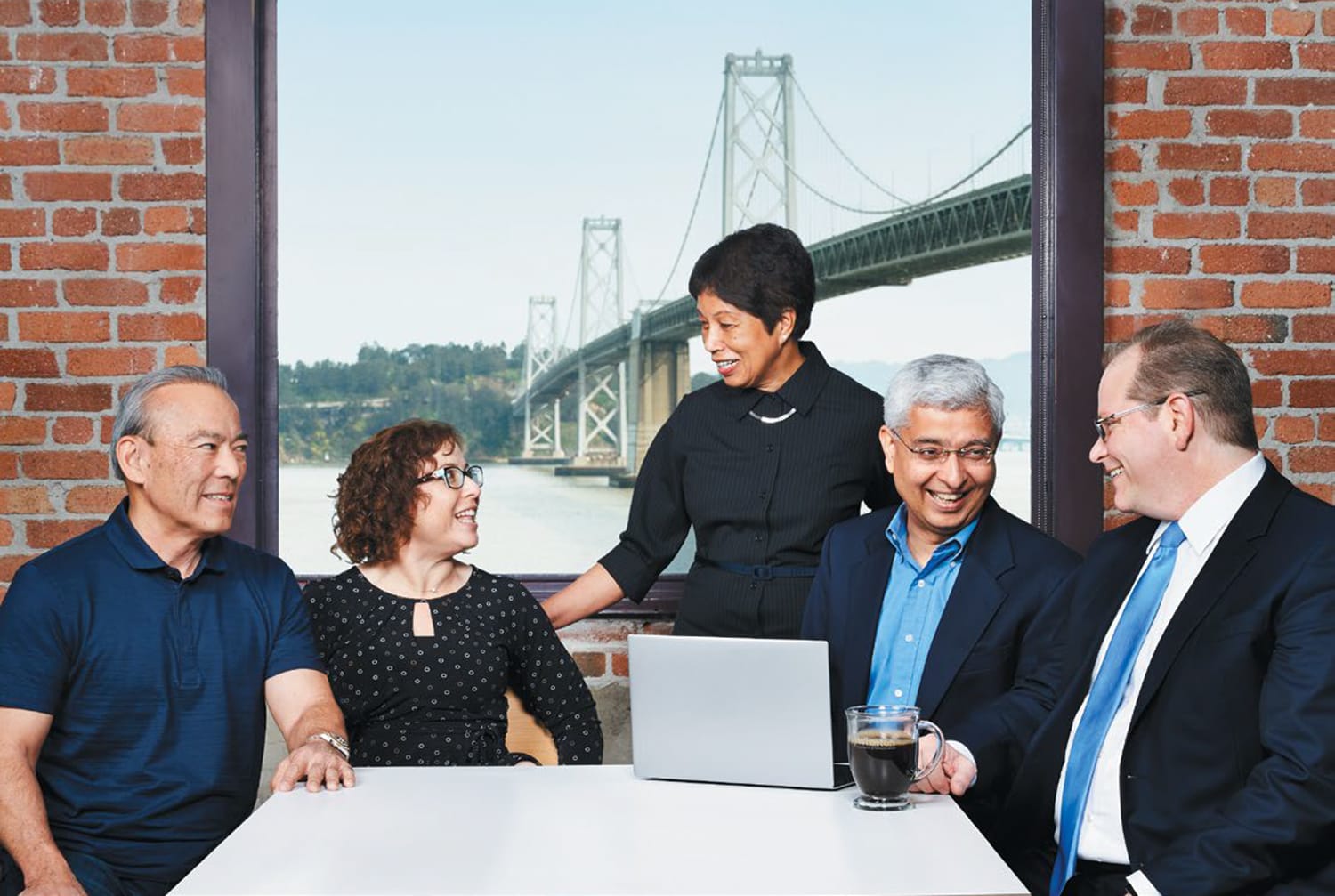The microphone traveled around the Park Hyatt hotel’s basement conference room, slipping from one person’s hands into another’s until it finally reached Ronald Murayama WG03. He’d been listening intently on this late August morning in 2001 while the people around him shared tidbits about themselves. It was a time tested icebreaker, designed to put those in the room at ease, but as the introductions wore on, Murayama felt anything but relaxed.

Ronald Murayama
He was a dentist who had two hugely successful, industry-leading companies to his name, but his eyes went wide as he realized he was sharing space with an impressive bunch: a medical professor and a lawyer with Ivy League degrees, accomplished PhD holders, and an actual rocket scientist, to name a few. “By the time the microphone came to me,” Murayama says, “I felt like an idiot and didn’t even want to speak.”
Murayama was a little too hard on himself. But you can bet some of the other members of the first class in the history of Wharton San Francisco felt a little awed as they started to get to know their new peers that day. It was a special group, yet they were in uncharted waters, the whole lot of them—the students, the professors, the administrators.
Just a year earlier, Wharton officials in Philadelphia had hatched the notion of planting a flag some 2,800 miles away from the familiar confines of the school’s University City campus. The West Coast beckoned; Silicon Valley was the land of Apple and Google and a thousand tech startups, a place where investors seemed to be tripping over themselves to hand piles of money to anyone with an idea that ended in the words dot-com. Wharton needed to have a physical presence in this dynamic new world, which was changing shape by the hour.
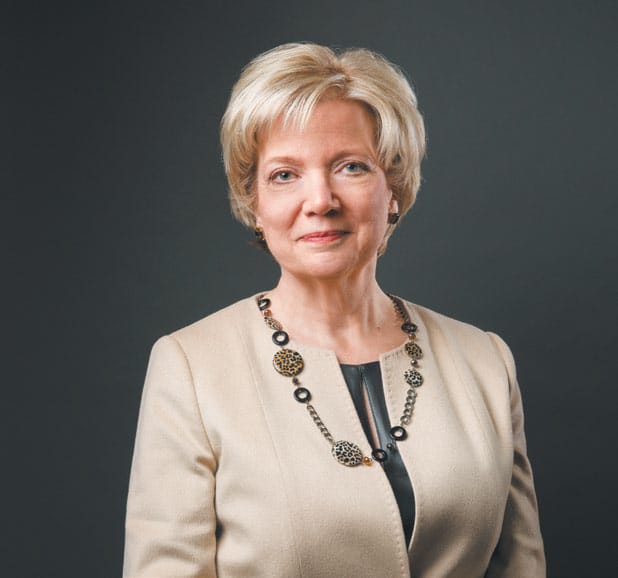
Catherine Molony
To some at Wharton, the thought of creating another campus from scratch was tantalizing. To others, it seemed intimidating, if not downright crazy. But to those trailblazing 62 students who on that late-summer morning filed into the hotel conference rooms—rooms they’d soon grow awfully familiar with—Wharton’s decision to branch out at a pivotal moment in history matched their own soaring, fearless ambitions.
Nothing happens overnight in academia, but when Wharton’s then dean, Patrick Harker, voiced his desire in 2000 to see the school expand its already considerable reach, those who were around at the time remember the idea quickly becoming a matter of when not if, like JFK talking about man landing on the moon someday.
“Wharton had very active alumni in Northern California, and they were practically pounding their fists, saying, ‘You need to be out here,’” says Catherine Molony, Philadelphia program director and director of alumni engagement for the MBA Program for Executives in Philadelphia and San Francisco. “The school set up a committee of faculty and administrators to begin exploring the idea. Frankly, I never saw anything happen as fast as what we called ‘Wharton West.’”

Karl Ulrich
The appeal was obvious: If the business world was reorienting itself around the promise of technology, Wharton needed to be close enough to have its finger on the pulse of organizations and entrepreneurs who were helping to shape the future. That’s not to say, though, that everyone thought opening a California campus was a no-brainer.
“You know, even though the faculty are there to be in the business of ideas and developing new things, it really is a conservative body,” explains Karl Ulrich, Wharton’s vice dean of entrepreneurship and innovation and CIBC professor of entrepreneurship and e-commerce. “The objection that was voiced at the time was, ‘Well, maybe you can get people to go out there once, but you’ll never get people to do it for five years or 10 years.’ Of course, that was just wrong. But then, I’m part of that lunatic fringe—I never met an idea I didn’t like.”

Len Lodish
Len Lodish, a Samuel R. Harrell emeritus professor, recalls the inherent challenge of trying to get Wharton and the University of Pennsylvania brass to all pull together in the same direction. “A lot of people had to do a lot of work and really put themselves out there to make it happen, but you never once heard anybody trying to take the credit,” he says. “Everyone always talked about the team.”
Molony and Howard Kaufold, who was then the deputy vice dean and director of the MBA for Executives program, were among the Wharton officials who ventured out to San Francisco to build connections with local businesses and create awareness about the school. “We had to educate people on who we were,” Molony says. This was, after all, a time before Facebook, Twitter, and Instagram—the last gasps of an era when the world wasn’t perpetually connected through smart phones, apps, and hashtags. “Luckily,” she says, “Wharton had a strong brand, especially among people in finance.”
Molony was struck by the kaleidoscopic culture of the dot-com offices she visited: One had a sliding board for employees to ride from one floor to another, while others took the concept of business casual in more of a summer vacation direction. “It was incredible,” she says. “We were seeing things you wouldn’t see on the East Coast. It was a lot of fun. Those were the dot-com boom days. We were living through business history.”
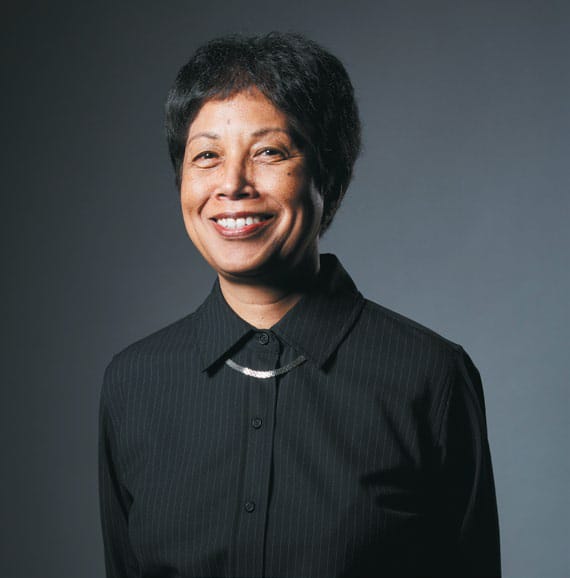
Juana Droessler
There was another particularly pressing problem: The school needed a place to hold classes. The ideal space had to have ceilings at least 14 feet high, to accommodate tiered classrooms. The historic Folger Building in the heart of downtown San Francisco fit the bill, but there was no way it would be ready for the start of the fall 2001 semester. It was time to improvise. “We held classes in the basement of the hotel,” laughs Juana Droessler, Wharton San Francisco class manager. “I couldn’t appreciate at the time what a big task this was, to be honest. Fortunately, the Wharton program was so established, and the structure for it was already there.”
While Wharton’s brand offered a degree of certainty—those who came through the executive MBA program would leave wiser and better-connected than when they started—the world outside those conference rooms was about to turn upside down.
The early days of Wharton San Francisco’s history were marked by a bit of trial and error, as faculty and administrators sought to figure out what the first batch of students wanted and needed from the school. The collaborative spirit gave the courses the spontaneous feel of a startup. “That first weekend,” Lodish says, “we sat the whole class down and asked them, ‘Why did you come here? What about the program attracted you?’”

Mori Taheripour
There was no shortage of answers. On a purely academic level, Lodish found, his students turned to Wharton because they wanted an undiluted executive MBA program that offered the same intensive curriculum that full-time students were expected to shoulder—just squeezed into weekend classes. But there were more personal motivations, too. For Mori Taheripour WG03, joining Wharton meant fulfilling a promise she had made to herself years earlier. “I had a small consulting practice,” she tells me, “and in 1996, I told my business partner that no matter what happened, I was going back to business school in five years. I needed skills that I didn’t think I possessed.”
Ronald Murayama had a practical motivation, too. He had run one company that was the first to offer over-the-counter dental bleaching products in the United States and was at the helm of a second that produced sonic toothbrushes. “Some of my classmates would ask me, ‘What are you doing here? You’re doing what we want to be doing!’” he says. “But my first company left a lot of money on the table—probably hundreds of millions of dollars. I didn’t have the right amount of financial knowledge. As expensive as a Wharton education was, the cost of ignorance is far higher.”

Ashmeet Sidana WG03
Ashmeet Sidana WG03 was working in product management for VMware, a small software startup that would go on to be worth $30 billion. “When I went into the program, I was looking at it more as the capstone of my education, in terms of rounding out and deepening my knowledge of marketing and finance,” he says. But life has a funny way of upending your expectations. As Sidana made his way through the executive MBA program, he felt something stir inside him that would ultimately lead him away from a hugely successful company. “What ended up happening instead,” he says, “is that I completely changed my career path.”
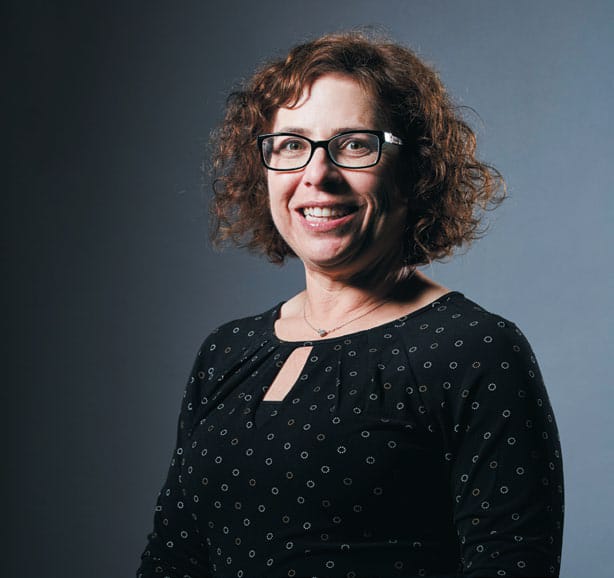
Tamera Wendoll
Tamara Wendoll WG03, then the senior executive vice president of marketing and operations for Palo Alto-based Kelmoore Investment Company, can’t remember the exact moment when she learned that Wharton was branching out to the West Coast. Yet it was a light-bulb moment for her all the same, coming at a time when she happened to be looking to further her education. “It was Wharton!” she says. There was no point in looking at other programs.
You get the idea—the first batch of Wharton San Francisco students knew exactly why they were there. But most didn’t realize how diverse their classmates would be or how quickly they would bond. “I would use the word ‘variety,’” Sidana says. “We had a dentist, lawyers, an Air Force officer, investment bankers, and technology entrepreneurs.”
Taheripour remembers longing to see her classmates when they gathered every two weeks. “We had a pretty small class, so it felt like we were on this adventure together. We were these pioneers,” she says. “I cannot remember thinking, ‘Oh God, we’re just having class in these conference rooms?’ Every minute felt fun and exciting. There was a lot going on in the world outside of us, too. I think that pushed us together even closer.” Wendoll recalls the camaraderie with similar fondness: “Everything felt so brand-new and exciting. The hotels, the meals and the bars after the meals.”
No one anticipated what would happen next. The dot-com bubble burst not long after the San Francisco campus began holding classes, and there were myriad business lessons to mine from the seismic collapse. Lodish remembers explaining to his students why faulty business strategies of online retailers like CDNow destined them to fail. Seeing companies that had recently had been stock market darlings suddenly turn to dust offered another reminder of the value of the lessons Wharton’s professors were imparting. “You can have great ideas and all of this money,” Molony says, “but you need to know how to manage it, and how to create strategies. That was our message.”

First Class
Then CFO, MetricStream
Now COO, MetricStream
Then Product management, VMware
Now Founder/managing partner, Engineering Capital
Then In-house counsel, Hewlett-Packard
Now Fmr. asst. management sec., U.S. Dept. of Ed.
Then Sr. manager, systems engineering, Boeing
Now Vice president, aeromechanics technolgy, Boeing
Then Vice dean, Wharton San Francisco
Now Professor emeritus, Wharton S.F. senior advisor
Then Chairman/CEO, Amden Corporation
Now Consultant for Amden Corp.
Then Senior marketing v.p., Kelmoore Investment Co.
Now COO, Dunham & Assoc.
Then Managing partner, Innovative Health Solutions
Now Wharton faculty, Legal Studies and Business Ethics
Then Director, radio frequency/mixed signal IC design, Silicon Wave
Now CEO, MaxLinear
The Silicon Valley upheaval paled in comparison to the September 11, 2001, terrorist attacks. The days and months that followed were filled with fear and uncertainty and a gnawing sense that the world had been forever changed. The students at Wharton San Francisco found solace in one another, in the friendly faces they saw at all-day weekend classes and study groups. “We had this family we could fall back on that felt comfortable and familiar, yet it also felt like an escape,” explains Taheripour. Smaller, personal dramas played out in the background: People got married and divorced, had children, lost and changed jobs and careers. Taheripour survived serious injuries she sustained in a car accident. “It was love and friendship, and laughing until you can’t laugh anymore,” she says. “It was also grueling academically, but we supported each other because we were in it together.”
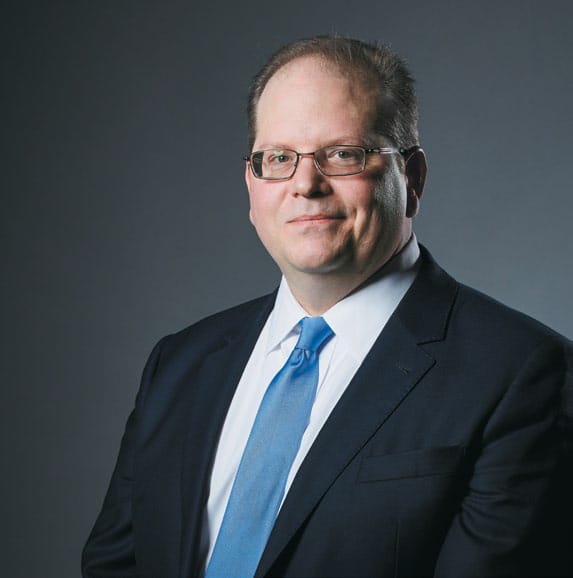
Andrew Jackson
The intimidating workload didn’t deter the San Francisco pioneers from digging into their studies. On the contrary, most seemed energized by the challenge of juggling careers, families, and substantial coursework. “It was a struggle, but most of the students are in an executive MBA program because they’re go-getters,” notes Andrew Jackson WG03, who at the time worked as in-house counsel for Hewlett Packard. “We were getting things done, and the quality of the professors was incredible. Some of the most well-respected names from the main Wharton campus in Philadelphia were trekking out there to spend time with us.”
“They were on their feet. That’s what was so much fun about teaching them,” Lodish says. “They were very concerned about applying what they learned on Saturday and Sunday when they got back to work on Monday.” But even Lodish couldn’t have predicted some of the paths Wharton San Francisco’s first students would venture down after graduating in 2003.
A simple question floated through the minds of many of those pioneers once they finally obtained their MBAs: Now what?
“You have this sense of, two years of my life flew by without a break. You couldn’t watch a three-hour football game without studying,” Taheripour says. “So, all of this was for what, exactly? I felt like I owed it to myself to find out what really made me happy. You can’t get out of a program like that and just go back to life as it was.”
She made a turn she never anticipated, venturing into the world of academia. Taheripour landed a faculty appointment with Wharton in 2004. She’s now a member of the Legal Studies and Business Ethics Department and teaches negotiations and dispute resolution in the undergraduate, MBA, and Executive Education programs.
Jackson returned to HP, where he was promoted to the company’s senior in-house counsel. After helping to manage a massive IT project, he received the invitation of a lifetime—an opportunity to work for the Obama administration, first as deputy assistant secretary for technology for the Department of the Interior and then as assistant secretary for management for the U.S. Department of Education. “If you do things well on that scale, you can have a massive impact that affects millions of Americans,” he says. Jackson doubts that such an opportunity would have come his way without his MBA from Wharton: “I honestly don’t believe I would have had the same kind of career progression.”
Like Taheripour, Ashmeet Sidana pivoted into a different career path after Wharton, reinventing himself as a venture capitalist after his time at VMware. He’s the founder and managing partner of Engineering Capital; some of his past investments include PrivateCore, which was acquired by Facebook, and Appurify, which was purchased by Google. Lodish—a limited partner in Engineering Capital—recalls being dazzled by Sidana while leading a project with Wharton’s Global Consulting Practicum. A handful of Wharton MBAs from San Francisco and students from the Indian School of Business had to try to convince a CEO from Mahindra & Mahindra—a multinational automobile manufacturer—that the company’s merger and acquisition policy was flawed. Over the course of about 20 minutes, Sidana won over the skeptical executive. “Ashmeet’s just a very special guy,” Lodish says.
Ronald Murayama is the chairman of Amden Corporation, the sonic toothbrush company he founded that inspired his decision to attend Wharton. He also helped one of his Wharton classmates, Kishore Seendripu WG03, launch his own company—the publicly traded MaxLinear, a billion-dollar firm that produces broadband communication chips. And Tamara Wendoll is now the chief operating officer of San Diego-based Dunham & Associates Investment Counsel, Inc.
The class has plenty of other highly accomplished alums, including Naveed Hussain WG03, vice president of aeromechanics technology at Boeing—he’s the rocket scientist whose brilliance wowed Murayama and other students from day one in San Francisco. Hussain heads the company’s research and technology center, which plays a critical role in ensuring that Boeing maintains a dominant presence in the $250 billion space industry. Gaurav Kapoor WG03 is chief operating officer of Palo Alto-based MetricStream, a pioneering risk management and compliance software company whose clients include DirecTV, Kellogg’s, Hasbro, and AllState.
Even for such a relatively small class, this list could go on and on. To a certain degree, it would be more surprising if you didn’t start to develop a hand cramp from trying to list all the industry-defining, life-altering pursuits these Wharton alumni went on to. That’s the expectation, right? Only the best of the best are able to secure an opportunity to learn from the school’s brilliant minds. But it’s hard not to look back on Wharton San Francisco’s first class and feel that they were different.
The class of 2003 helped the program find its legs in California—those hotel conference rooms gave way to the Folger Building, which gave way to state of-the-art digs in Hills Plaza five years ago—and the faculty and staff helped a collection of bright young strivers develop a laser focus that would enable them to do just about anything with their lives. The heights some have reached have been breathtaking. But it’s easy for them all to think back to a simpler time 16 years ago, when they were moving through an uncertain world together, hoping that the struggle and sleep deprivation would pay off even as they were enjoying the invigorating charge that came from the newness of everything they experienced. “It was such a great time,” Wendoll says. “I wish sometimes that I could be back there again.”
Some formed lasting friendships, and others catch up over drinks at class reunions—laughing ruefully about how much time has gone by already, how the current crop of WEMBA students doesn’t know how good they have it. “They really were a close group,” Lodish says of the pioneers. “They understood how valuable it was to share their experiences and their mistakes in class, so they could learn from each other.”
He pauses for a moment, then chuckles at a memory of that special group: “I will never forget the last day of classes we had at the hotel, before we moved into our facility in the Folger Building. All of the students came to class in their pajamas. Just for fun.”
David Gambacorta is an investigative reporter at the Philadelphia Inquirer and a freelance writer.
Published as “Living Through History” in the Spring/Summer 2017 issue of Wharton Magazine.




















